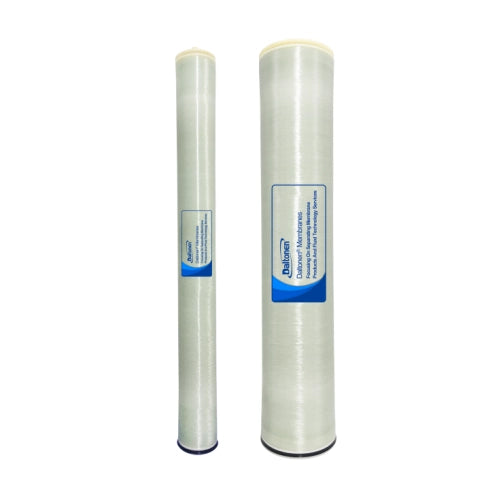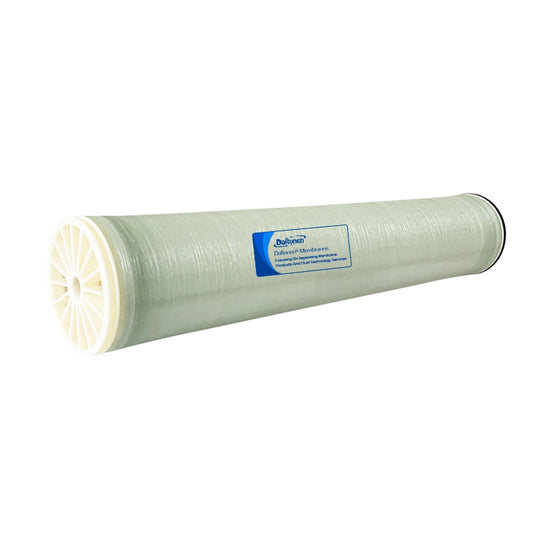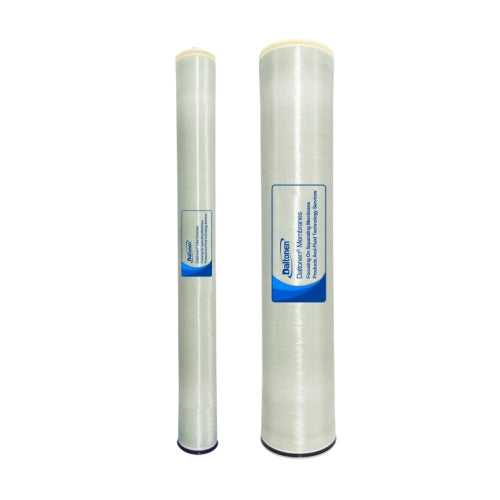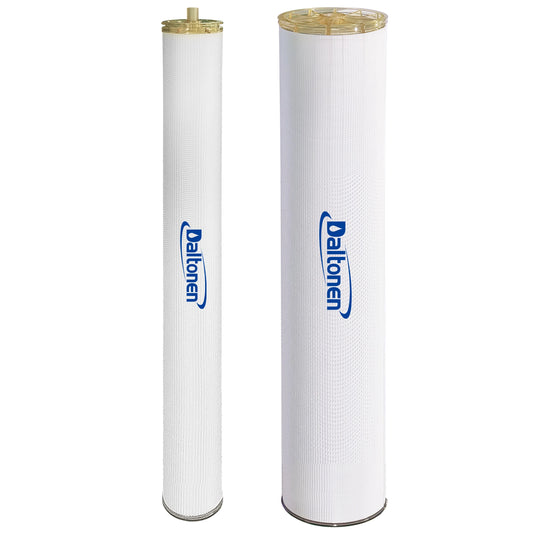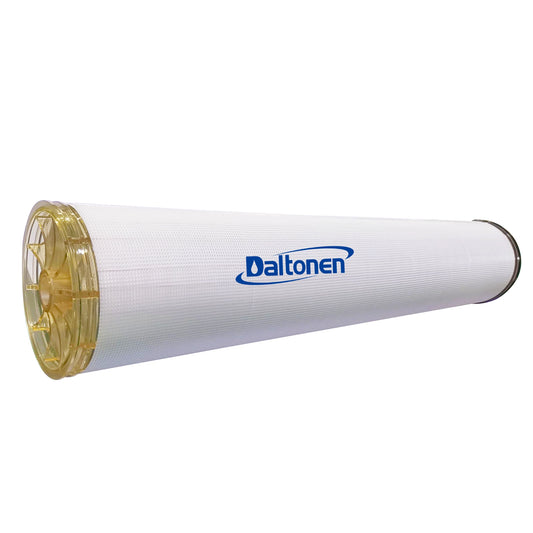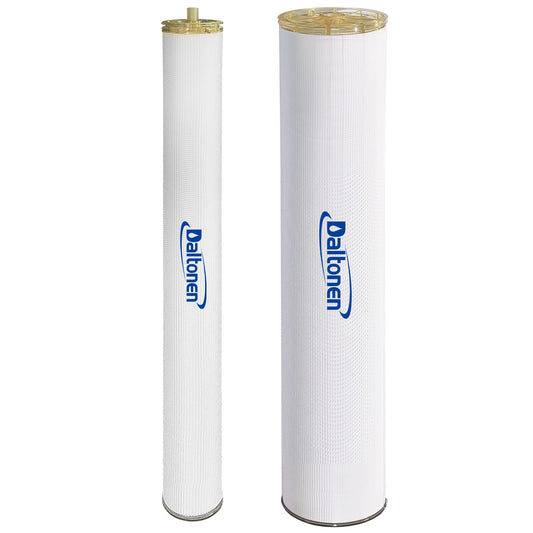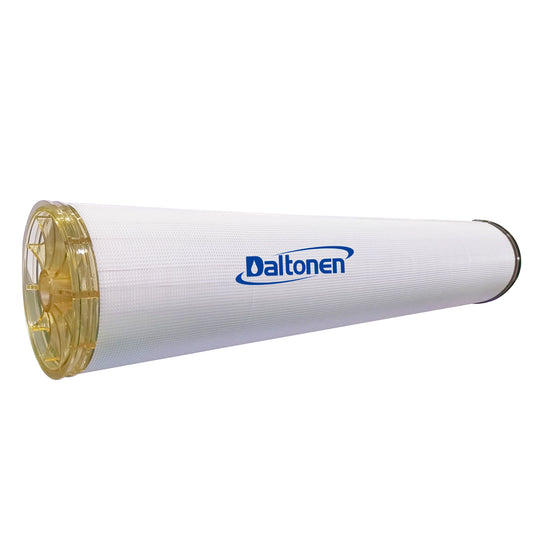Analysis of the Contradictions in the Demand for Low-Salinity and High-Efficiency Desalination in Municipal Water Supply
27 Jun 2025
-
Current Status of Municipal Water Supply
1.1 Overview of Water Sources and Water Quality
Municipal water supply sources mainly include surface water, groundwater, and reclaimed water. In China, surface water is the primary source of water supply, accounting for more than 70%. However, with the rapid development of industrialization and urbanization, the quality of surface water has been affected to a certain extent. According to the monitoring data from the Ministry of Ecology and Environment, in 2024, the proportion of good-quality surface water (Class I-III) in China was 85%, but there are still some areas with Class V or worse water quality. The main pollutants are chemical oxygen demand (COD), ammonia nitrogen, and total phosphorus. Groundwater, as a supplementary source, also faces problems of overexploitation and pollution in some areas, with a national groundwater quality compliance rate of only about 60%. In addition, the utilization rate of reclaimed water is relatively low, at around 10%, mainly concentrated in industrial cooling and urban greening fields.
The water quality standards for municipal water supply mainly rely on the "Hygienic Standard for Drinking Water" (GB5749-2022), which stipulates 106 water quality indicators, including microbial indicators, toxicological indicators, sensory characteristics, and general chemical indicators. Currently, the overall water quality compliance rate of municipal water supply in China is relatively high, reaching over 95%. However, in some economically underdeveloped areas and small water supply systems, the water quality compliance rate is lower, with issues such as microbial contamination and heavy metal exceedances. For example, in a small water supply system in a western city, due to aging equipment and poor management, the microbial indicator exceedance rate reached 10%, posing potential health risks to residents.

1.2 Layout of Water Supply Network
The municipal water supply network in China mainly consists of water sources, water intake facilities, water treatment plants, water transmission pipelines, and water distribution networks. The layout of the water supply network is influenced by urban planning, geographical environment, and population distribution. Currently, the average water leakage rate of urban water supply networks in China is 15%, and in some areas, it even exceeds 20%. A high leakage rate not only wastes water resources but can also lead to water quality contamination and insufficient water supply pressure. For example, in a coastal city with a high groundwater level, the water supply network leakage rate is as high as 25%, resulting in a significant waste of water resources and increased water supply costs.
The intelligent transformation of water supply networks is a current development trend. By installing smart water meters, pressure sensors, and water quality monitoring devices, real-time monitoring and refined management of the water supply network can be achieved. Currently, some cities in China have carried out pilot projects for the intelligent transformation of water supply networks, such as Shanghai and Shenzhen. Through intelligent transformation, the water supply network leakage rate has been reduced by 5%-10%, and the water supply efficiency has been significantly improved. In addition, some cities have adopted district metering management technology, dividing the water supply network into several independent metering areas. By monitoring the flow and leakage in each area, precise leakage control can be achieved.
-
Overview of Low-Salinity and High-Efficiency Desalination Technologies
2.1 Principles of Main Desalination Technologies
The demand for low-salinity and high-efficiency desalination in municipal water supply mainly stems from the potential impact of salt content in water quality on residents' health and the water supply system. Common desalination technologies include reverse osmosis (RO), nanofiltration (NF), electrodialysis (ED), and ion exchange (IX).
-
Reverse Osmosis (RO): Reverse osmosis technology utilizes the principle that water molecules pass through a semipermeable membrane while salts are retained under pressure. The desalination rate of this technology can reach over 95%. For example, in the field of seawater desalination, reverse osmosis technology is widely applied, with operating pressures typically ranging from 3 to 5 MPa. The pore size of reverse osmosis membranes is extremely small, effectively removing dissolved salts, organic matter, and microorganisms from water.
-
Nanofiltration (NF): The principle of nanofiltration technology is similar to reverse osmosis, but its membrane pore size is slightly larger, with a desalination rate usually between 60% and 90%. Nanofiltration membranes are effective in removing divalent ions and organic matter and are suitable for treating low-salinity water and reducing water hardness. For example, when treating surface water, nanofiltration technology can effectively remove calcium and magnesium ions from water, reducing water hardness while retaining some beneficial minerals for the human body.
-
Electrodialysis (ED): Electrodialysis is a technology that uses ion exchange membranes to selectively transport ions through the membrane under the influence of an electric field, thereby achieving desalination. Its desalination rate is generally between 80% and 90%. The advantage of electrodialysis technology is its low energy consumption, making it suitable for treating low-salinity water. For example, in some small water supply systems, electrodialysis technology is used to remove salts from water while reducing the use of chemical agents.
-
Ion Exchange (IX): Ion exchange technology involves ion exchange resins reacting with ions in water to remove salts. The desalination rate of this technology can reach over 90%. Ion exchange resins are selective and can remove specific ions as needed. For example, in removing hardness ions (such as calcium and magnesium ions) from water, ion exchange technology is an efficient and economical method.
2.2 Current Status of Technology Application
At present, the application of low-salinity and high-efficiency desalination technologies in municipal water supply is gradually expanding, but there are differences in the application scope and effectiveness of different technologies.
-
Reverse Osmosis Technology: Reverse osmosis technology is most widely used in seawater desalination and high-salinity water treatment. Globally, the number of reverse osmosis seawater desalination plants is increasing. As of 2024, the global reverse osmosis seawater desalination capacity has reached 50 million cubic meters per day. In China, reverse osmosis technology is also used in some coastal cities' seawater desalination projects, such as the seawater desalination plants in Qingdao and Tianjin, with treatment capacities of 100,000 and 200,000 cubic meters per day, respectively. However, the high energy consumption and membrane fouling problems of reverse osmosis technology are still challenges that need to be addressed.
-
Nanofiltration Technology: Nanofiltration technology performs well in treating low-salinity surface water and groundwater, especially in removing hardness and some organic matter. In China, nanofiltration technology has been applied in the water supply systems of several cities, such as some water plants in Beijing and Shanghai, with a treatment capacity of 100,000 cubic meters per day. The advantage of nanofiltration technology lies in its lower energy consumption and better water quality improvement effects, but its removal effect on monovalent ions is relatively weak.
-
Electrodialysis Technology: Electrodialysis technology has certain application advantages in small water supply systems and low-salinity water treatment. Its low energy consumption makes it suitable for treating water with salinity below 1000 mg/L. In China, some rural and remote area water supply systems have adopted electrodialysis technology, with treatment capacities ranging from 1000 to 5000 cubic meters per day. However, the desalination efficiency of electrodialysis technology is relatively low, and ion exchange membranes need to be replaced regularly.
-
Ion Exchange Technology: Ion exchange technology is widely used in removing hardness ions from water, especially in small water supply systems and industrial water treatment. In China, ion exchange technology is used in groundwater treatment projects in several cities, with treatment capacities ranging from 5000 to 10000 cubic meters per day. The advantages of ion exchange technology are simple operation and low cost, but ion exchange resins need to be regenerated regularly, and a certain amount of waste liquid is generated.
-
Demand Analysis
3.1 Low-Salinity Requirements for Municipal Water Supply
The low-salinity requirements for municipal water supply mainly stem from the potential impact of salt on residents' health and the water supply system. According to the recommendations of the World Health Organization (WHO), the total dissolved solids (TDS) content in drinking water should be below 500 mg/L. In China, the salinity of municipal water supply in some areas is relatively high, especially in some coastal cities and areas with overexploitation of groundwater, where the TDS content may exceed 1000 mg/L. For example, the average TDS content of municipal water supply in a coastal city is 1200 mg/L, with the main components being sodium chloride, sulfate ions, and calcium and magnesium ions. Long-term consumption of high-salinity water may lead to increased kidney burden and cardiovascular disease risks for residents. In addition, high-salinity water can also cause corrosion of water supply pipelines and equipment, increasing the maintenance costs of the water supply system.
3.2 Necessity of High-Efficiency Desalination
High-efficiency desalination technology is crucial for the sustainable development of municipal water supply systems. With the acceleration of urbanization and population growth, the demand for municipal water supply is increasing, and the requirements for water quality are also becoming higher. High-efficiency desalination technology can not only reduce the salt content in water to meet residents' demand for healthy drinking water but can also effectively alleviate the corrosion problem of water supply systems and extend the service life of equipment. From an economic perspective, although the initial investment in desalination technology is high, in the long term, the health benefits it brings and the reduction in equipment maintenance costs can significantly improve the economic viability of water supply systems. For example, after a city adopted reverse osmosis technology for desalination of municipal water supply, the maintenance costs of the water supply system were reduced by 20%, and residents' health-related medical expenses also decreased. Additionally, the application of high-efficiency desalination technology can increase the utilization rate of reclaimed water and alleviate water resource shortages.

-
Contradiction Analysis
4.1 Contradiction Between Technology Costs and Municipal Budgets
There is a significant contradiction between the costs of low-salinity and high-efficiency desalination technologies for municipal water supply and municipal budgets. High-efficiency desalination technologies, especially reverse osmosis (RO) and nanofiltration (NF), although excellent in desalination efficiency and water quality improvement, have high initial investment and operation and maintenance costs. For example, the equipment investment cost of reverse osmosis technology is about 1000-1500 yuan per cubic meter of treatment capacity, and that of nanofiltration technology also reaches 800-1200 yuan per cubic meter of treatment capacity. In addition, the energy consumption of reverse osmosis technology is relatively high, with about 3-5 kWh of energy required to treat 1 cubic meter of water, further increasing operation costs.
In contrast, the budgets of municipal water supply systems are usually subject to fiscal constraints. According to the report from the China城镇供水排水协会 (China Urban Water Supply and Drainage Association), in 2024, the average budget allocation for municipal water supply systems in China only allocated about 10% for the introduction of new technologies and equipment updates. In some economically underdeveloped areas, this proportion is even lower, at only 5%-8%. This results in many municipal water supply systems facing insufficient funds when introducing high-efficiency desalination technologies.
Moreover, the operation and maintenance costs of high-efficiency desalination technologies are also significant. The lifespan of reverse osmosis membranes is typically 3-5 years, and that of nanofiltration membranes is 5-7 years. The regeneration cycle of ion exchange resins is relatively short and needs to be replaced regularly. These equipment replacement and maintenance costs account for a large proportion of the operation costs of municipal water supply systems. For example, in a coastal city's seawater desalination plant, the annual costs for reverse osmosis membrane replacement and maintenance account for 20% of the total operation costs.
4.2 Balancing Desalination Efficiency and Water Supply Scale
In municipal water supply, a balance needs to be achieved between desalination efficiency and water supply scale. Although high-efficiency desalination technologies can significantly reduce the salt content in water, their application in large-scale water supply systems poses challenges. For example, reverse osmosis technology, with a desalination rate of over 95%, has more pronounced high energy consumption and membrane fouling problems in large-scale water supply systems. Take a coastal city as an example; its seawater desalination plant has a treatment capacity of 200,000 cubic meters per day. After adopting reverse osmosis technology, the operation costs significantly increased due to energy consumption and membrane fouling issues.
On the other hand, nanofiltration technology, with lower energy consumption and a desalination rate of 60%-90%, is relatively weak in removing monovalent ions when dealing with large-scale water supply. For instance, in some water plants in Beijing and Shanghai, nanofiltration technology is mainly used for low-salinity surface water treatment, with a treatment capacity of 100,000 cubic meters per day. It is effective in removing hardness and some organic matter. However, for high-salinity water, the desalination efficiency of nanofiltration technology may not meet water quality requirements.
Electrodialysis technology performs well in small water supply systems with low energy consumption and is suitable for treating low-salinity water. However, its application in large-scale water supply systems is limited. Its desalination efficiency is relatively low, and ion exchange membranes need to be replaced regularly. For example, some rural and remote area water supply systems adopt electrodialysis technology, with treatment capacities ranging from 1000 to 5000 cubic meters per day. In large-scale urban water supply systems, its efficiency and cost-effectiveness are relatively low.
Ion exchange technology is widely used in removing hardness ions, but in large-scale water supply systems, regular regeneration of ion exchange resins is required, and a certain amount of waste liquid is generated. For example, in some groundwater treatment projects, the treatment capacity of ion exchange technology is between 5000 and 10000 cubic meters per day. However, in large-scale water supply systems, its operation and maintenance costs are relatively high, and the waste liquid treatment issue needs to be additionally addressed.
-
Summary
The analysis of the contradictions in the demand for low-salinity and high-efficiency desalination in municipal water supply shows that although high-efficiency desalination technologies are significant for water quality improvement and the sustainable development of water supply systems, they face many challenges in practical applications.
From a technical perspective, reverse osmosis, nanofiltration, electrodialysis, and ion exchange technologies each have their advantages and disadvantages. Reverse osmosis technology has high desalination efficiency but high energy consumption and pronounced membrane fouling problems; nanofiltration technology has lower energy consumption but weak removal effects on monovalent ions; electrodialysis technology is suitable for low-salinity water treatment, but its efficiency and cost-effectiveness are limited in large-scale water supply applications; ion exchange technology is simple to operate and low in cost, but in large-scale water supply systems, its operation and maintenance costs are high, and there is the issue of waste liquid treatment. The applicability of these technologies varies under different scales and water quality conditions and needs to be selected and optimized according to specific circumstances.
From an economic perspective, the initial investment and operation and maintenance costs of high-efficiency desalination technologies are high, creating a significant contradiction with the limited budgets of municipal water supply systems. This issue is more prominent in economically underdeveloped areas, where insufficient funds restrict the widespread application of high-efficiency desalination technologies. Furthermore, the operation and maintenance costs of desalination technologies are considerable, with equipment replacement and maintenance costs accounting for a large proportion of the operation costs of municipal water supply systems, further intensifying the economic pressure.
In practical applications, a balance needs to be achieved between desalination efficiency and water supply scale. Large-scale water supply systems impose higher demands on the efficiency and cost-effectiveness of desalination technologies. Existing technologies often face issues of increased energy consumption and higher maintenance costs when applied on a large scale. Therefore, future efforts need to focus on further research and development to enhance the applicability and cost-effectiveness of desalination technologies in large-scale water supply systems.
In conclusion, resolving the contradictions in the demand for low-salinity and high-efficiency desalination in municipal water supply requires multi-faceted efforts. On the one hand, it is necessary to strengthen technology research and development to improve the efficiency of desalination technologies and reduce costs. On the other hand, municipal water supply system budgets need to be planned reasonably, with increased investment and support for new technologies. Additionally, appropriate desalination technologies should be selected and optimized based on specific water quality conditions and water supply scales to achieve sustainable development of municipal water supply systems.
Tags:
